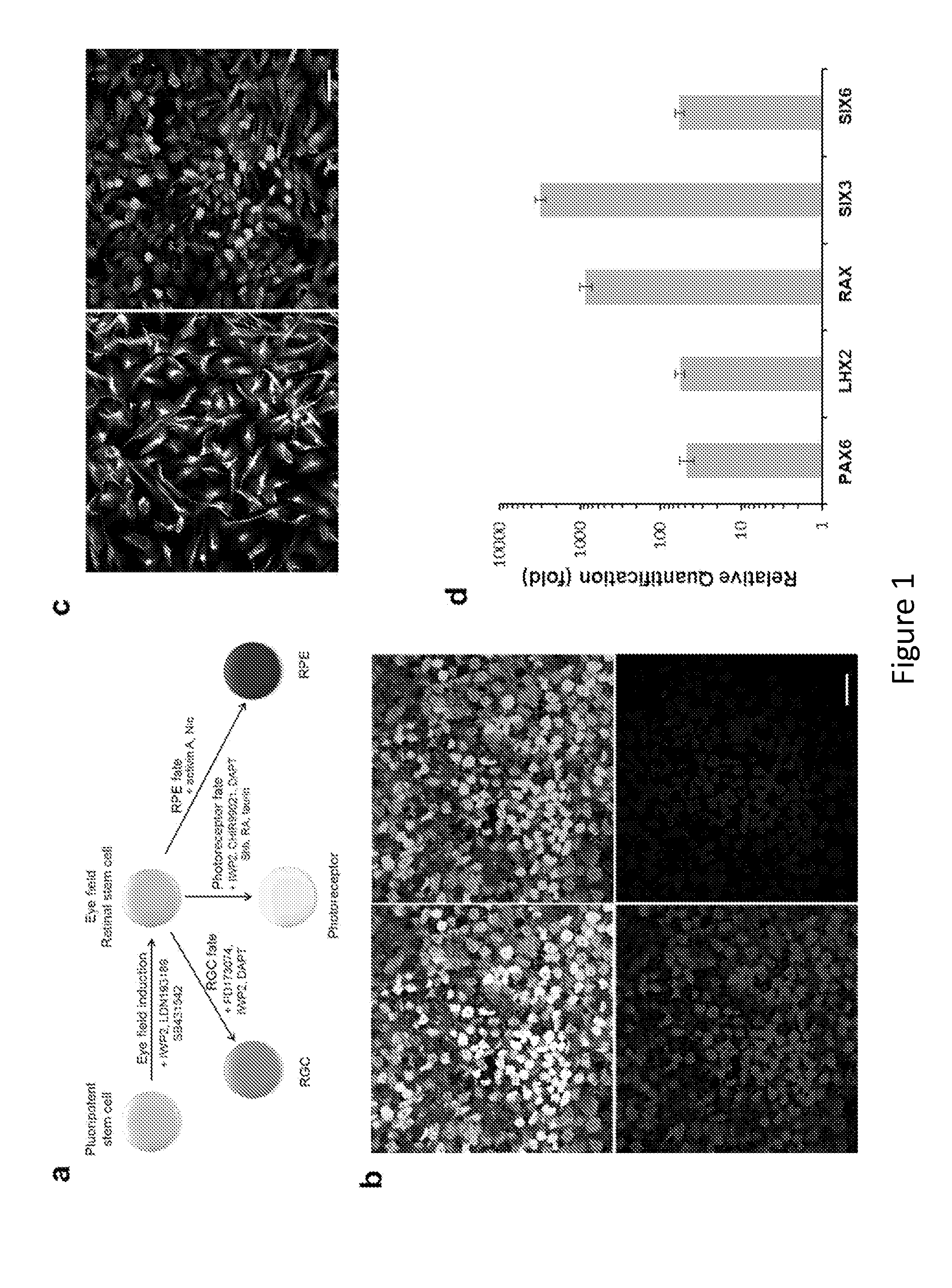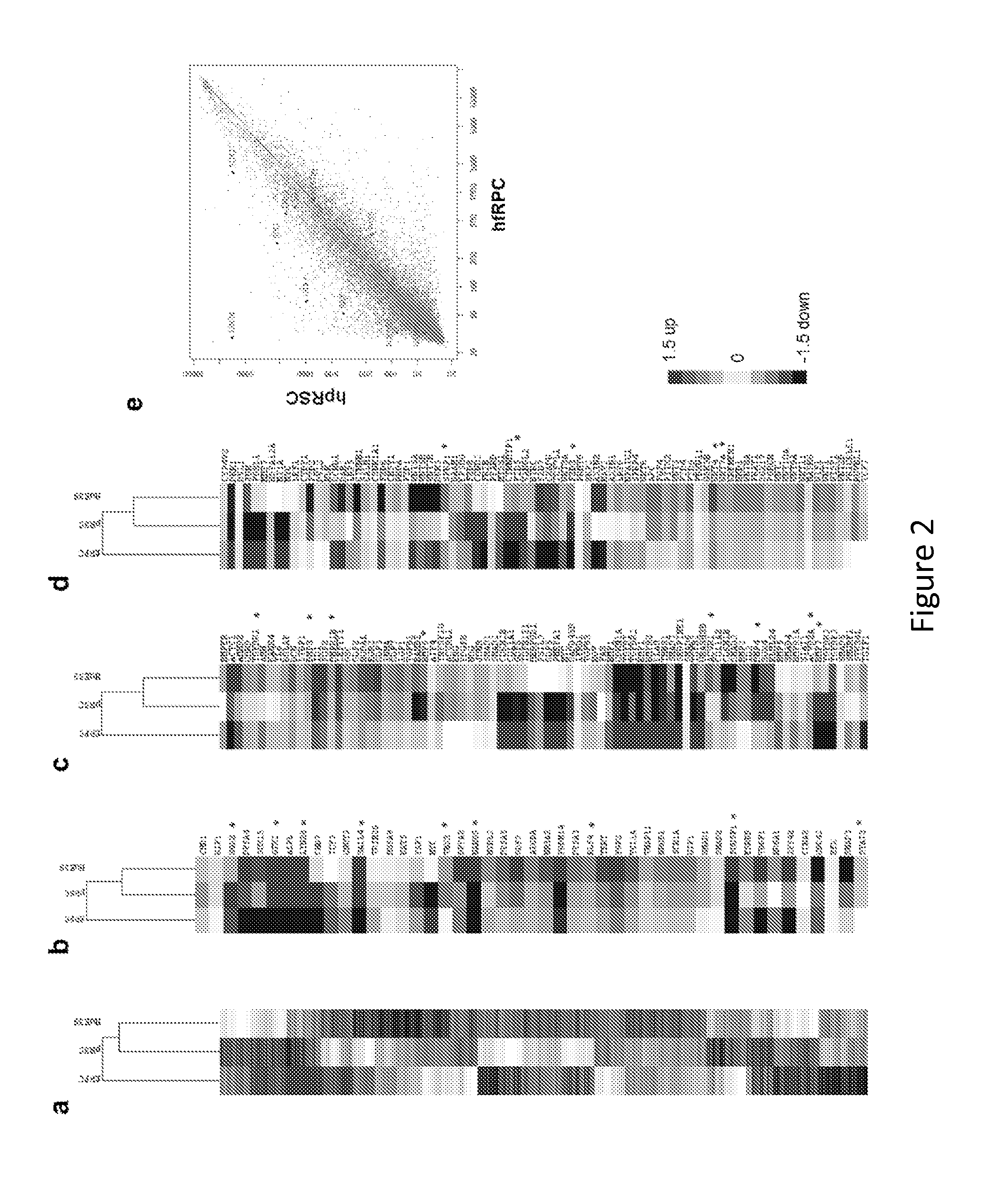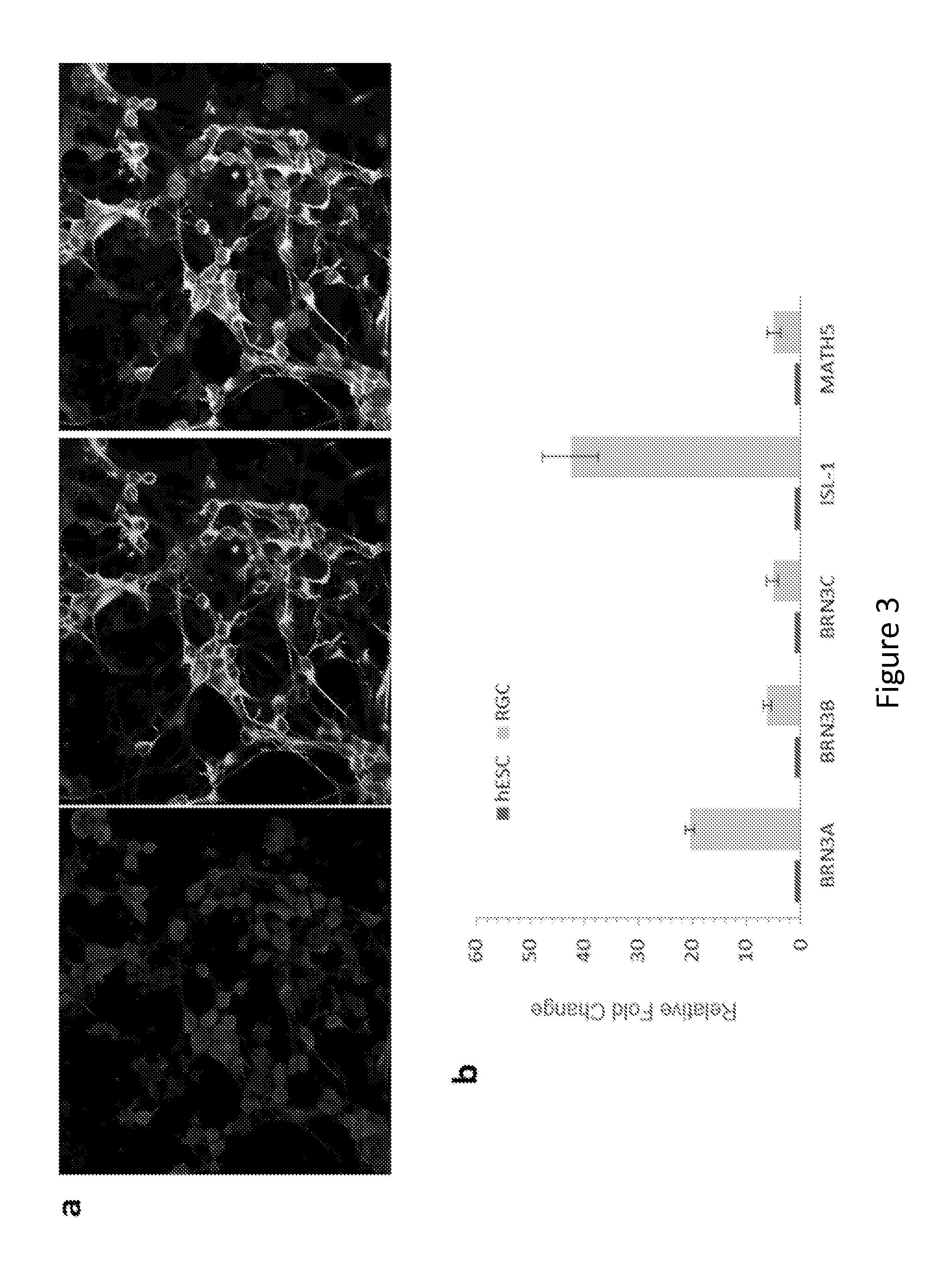Methods of mammalian retinal stem cell production and applications
a stem cell and mammalian technology, applied in the field of mammalian retinal stem cell production and applications, can solve the problems of limited success of primary retinal progenitor cells isolated from human fetal or adult retinal tissues, inconvenient and inability to achieve direct transplantation of hpscs in clinical applications
- Summary
- Abstract
- Description
- Claims
- Application Information
AI Technical Summary
Benefits of technology
Problems solved by technology
Method used
Image
Examples
example 1
Methods
[0175]Cell Culture and Differentiation.
[0176]Human embryonic stem cells, H9 (WA9, WiCell) and HuES9 (http: / / grants.nih.gov / stem_cells / registry / current.htm?id=40) (passage 25-40), were cultured under feeder-free and serum-free conditions in StemPro hESC SFM medium (Invitrogen) on plates coated with growth factor-reduced Matrigel (BD Biosciences). Human primary fetal retinal progenitors were isolated from 17-week human fetal retina obtained with informed consent and IRB approval and cultured following a previously described procedure45. After the undifferentiated hESCs reached ˜80% confluence in culture, the medium was switched to serum-free N2B27 priming medium (DMEM / F12, N2, B27, 0.2% BSA, 2 mM L-GlutaMAX, 0.1 mM MEM non-essential amino acids, and 0.1 mM β-mercaptoethanol) supplemented with 20 ng / ml bFGF for 1-2 days. The nearly confluent monolayer culture of hESCs was further cultured in N2B27 priming medium supplemented with small molecule inhibitors (5 μM SB431542, 50 nM L...
PUM
| Property | Measurement | Unit |
|---|---|---|
| molecular weight | aaaaa | aaaaa |
| molecular weight | aaaaa | aaaaa |
| molecular weight | aaaaa | aaaaa |
Abstract
Description
Claims
Application Information
 Login to View More
Login to View More - R&D
- Intellectual Property
- Life Sciences
- Materials
- Tech Scout
- Unparalleled Data Quality
- Higher Quality Content
- 60% Fewer Hallucinations
Browse by: Latest US Patents, China's latest patents, Technical Efficacy Thesaurus, Application Domain, Technology Topic, Popular Technical Reports.
© 2025 PatSnap. All rights reserved.Legal|Privacy policy|Modern Slavery Act Transparency Statement|Sitemap|About US| Contact US: help@patsnap.com



